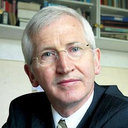Twelve-year experience in the investigation and treatment of paragangliomas.
Atslēgvārdi
Abstrakts
We report a 12-year laboratory experience in the diagnosis of 37 patients with phaeochromocytoma, one with malignant paraganglioma and one with ganglioneuroblastoma. Surgery was performed in eight different hospitals, which underlines the difficulty of ensuring uniformity of investigations. Of the 37 with phaeochromocytoma, 15 were in the right adrenal gland, 12 were on the left, seven were bilateral and three were extra adrenal. Twenty-three were male and 15 were female; the median age was 36 years. Four of five patients with von Hippel-Lindau disease had bilateral adrenal tumours and four had neurofibromatosis. None had multiple endocrine neoplasia. Using essential hypertensive patients as a reference population, diagnostic sensitivity was 80% for noradrenaline, 54.4% for adrenaline, 19.1% for dopamine, 93.3% for total normetanephrine, 33.3% for total metanephrine, 78.7% for 3-methoxy-4-hydroxymandelic acid (HMMA) and 23.5% for homovanillic acid (HVA). However, if each patient's results were taken as a package, the sensitivities were 100% for noradrenaline, 63.6% for adrenaline, 30.3% for dopamine and 89% for HMMA. Seven recent patients had gene analysis. There were six (15.4%) deaths due directly or indirectly to the paraganglioma. Postoperative blood pressures were normal in 74%. The decrement in catecholamine values post-surgery is shown. Urinary noradrenaline values fell by a mean of 94.5% and the use of urinary noradrenaline as a tumour marker is also demonstrated.


